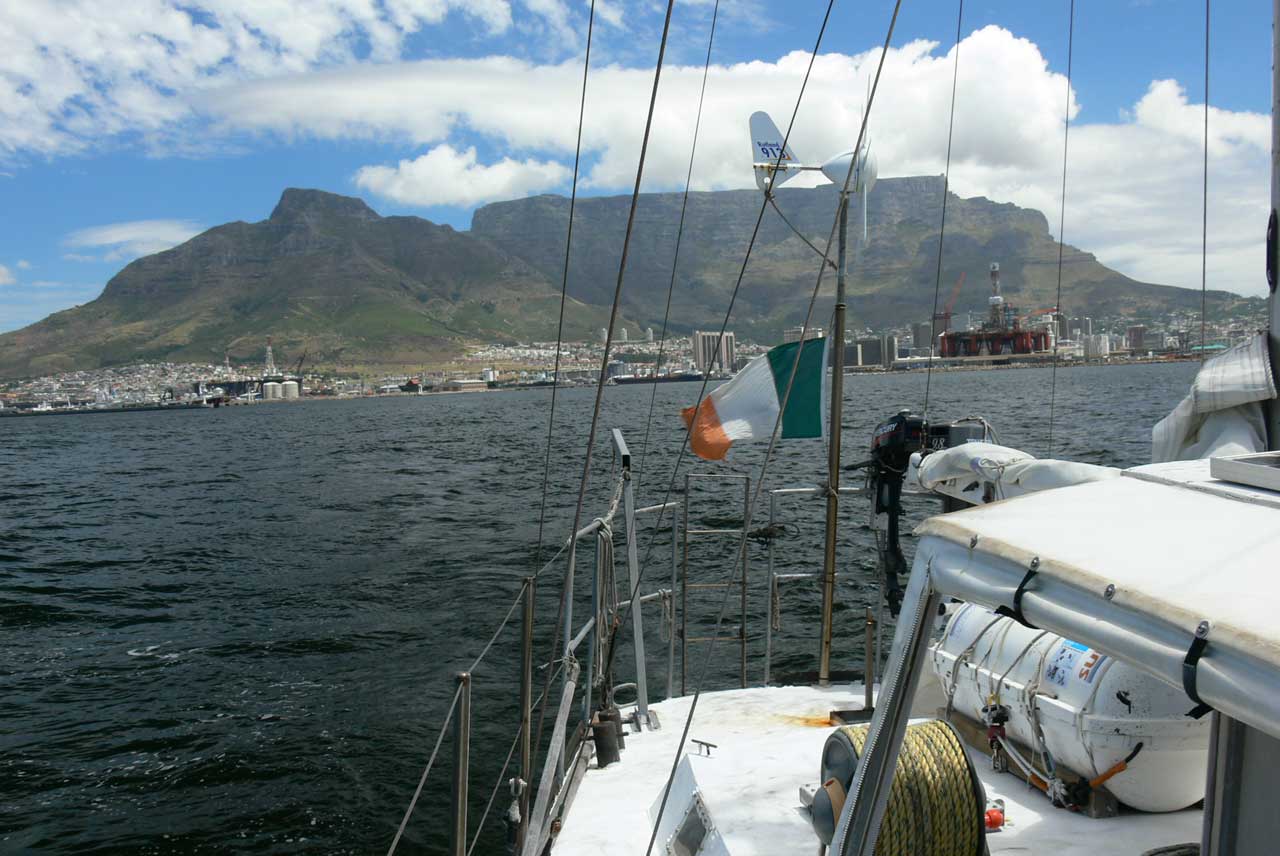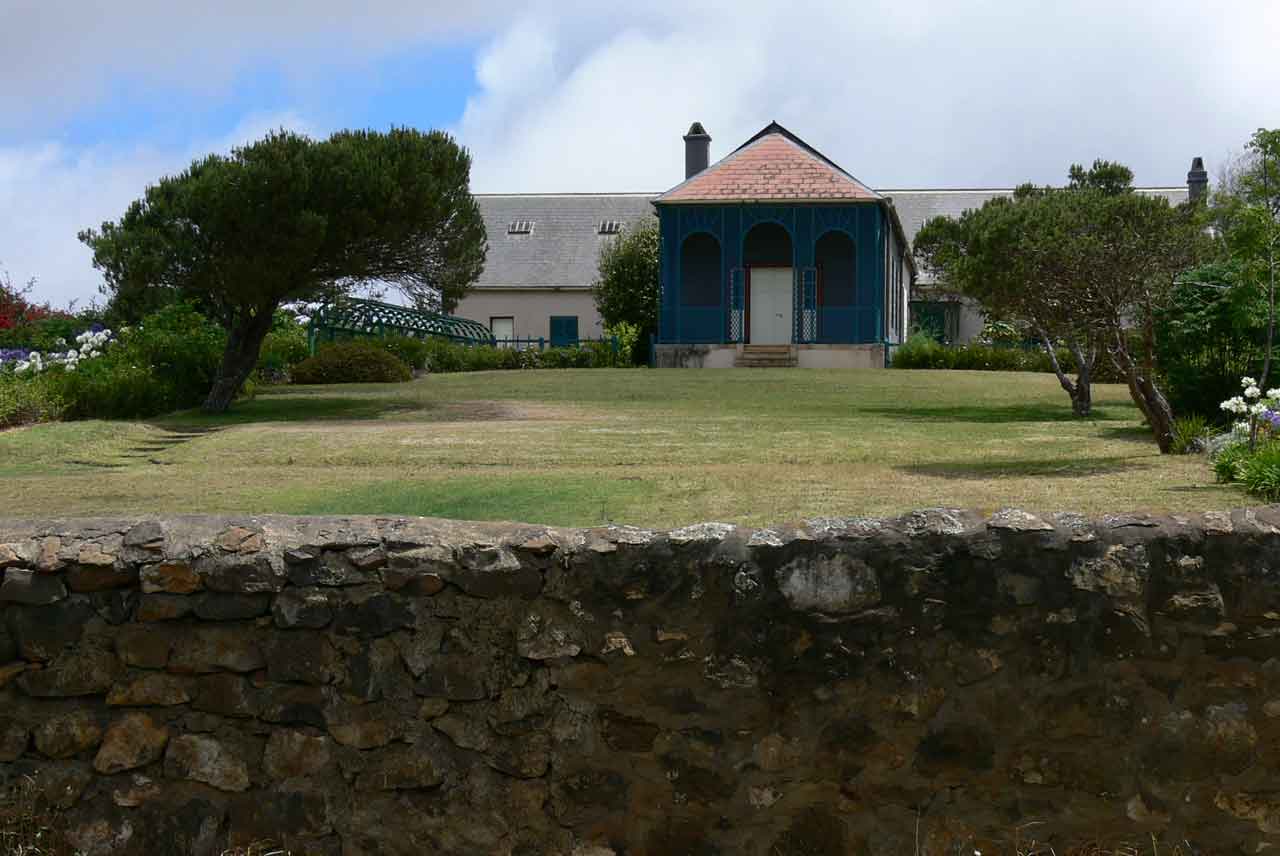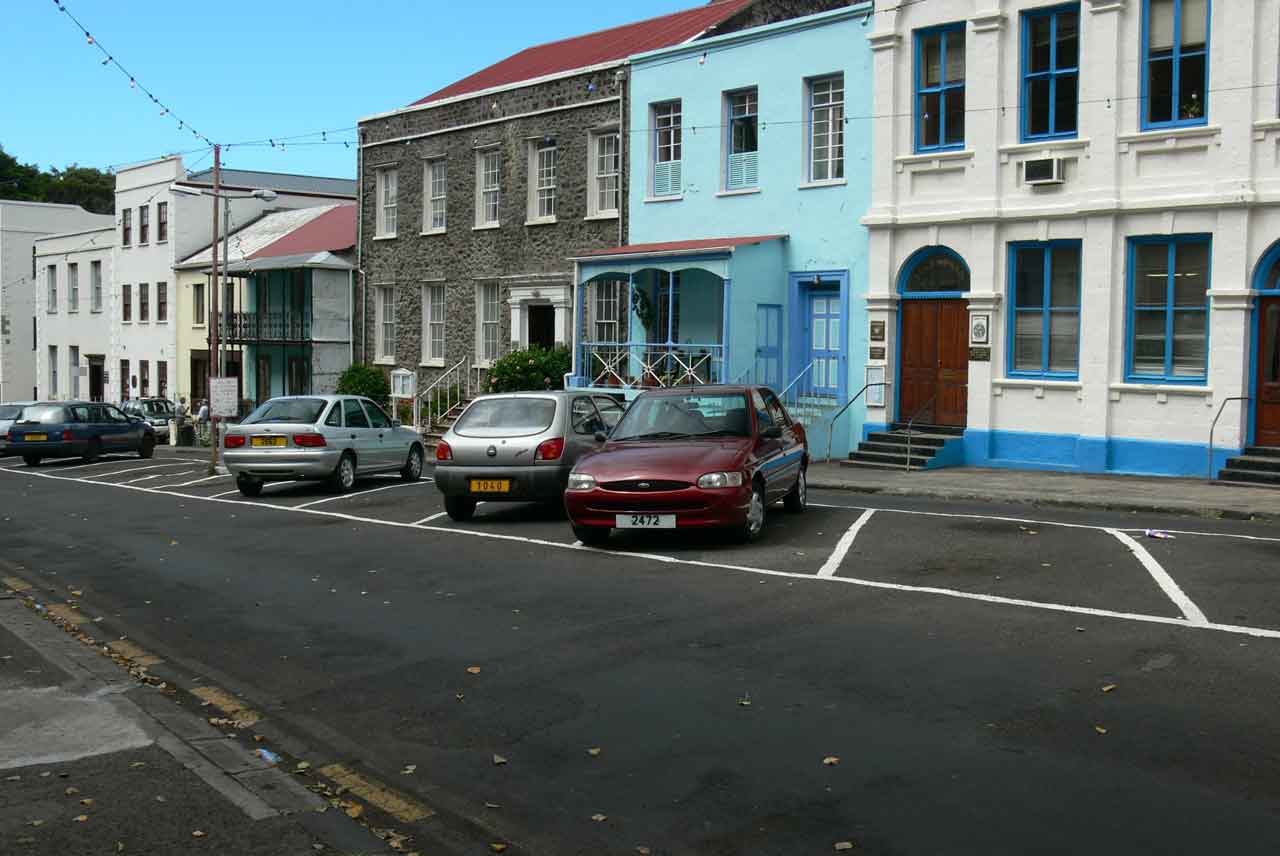|
| underway from cape town |

|
| table mountain |
By the time we left Cape Town there was a feeling that South Africa was beginning to fall apart. There were
daily power cuts euphemistically termed load shedding. There just isn’t enough power generating capacity in the country
and what they do have is under-maintained as a lot of the skilled workforce has emigrated and as yet there aren’t enough
newly trained operators to take their places. Apparently both the old and the new governments had put off starting to build
new stations and now it will be, they say, five years before the situation gets any better. In the meantime the country has
some of the lowest electricity tariffs in the world – curious eh? When we tried to buy diesel before leaving Bunker
Point was empty. We had to buy from the marina which only had 1700 litres left in total. Trip boats from the Waterfront were
rushing across to fight over the last of it.
We needed some of that fuel for the first 24 hours as we had to motor sail northwards to escape an approaching front. After
that we had an ideal sail for more than a week until the wind dropped away and left us drifting along in hot sun and a very
slight swell. We didn’t mind, as we didn’t want to arrive into St Helena on Christmas day and incur overtime charges.
We spotted the island on Boxing Day morning. What a bleak and barren sight. St Helena’s most famous resident was Napoleon
who spent 6 years here before he died. He must have been horrified to see this landfall. There’s hardly a blade of grass
to be seen and the whole island looks so eroded that a good rain shower might make it slip into the sea.
The anchorage is off Jamestown and the shallower water is jammed with small local boats. We ended up anchored along with
a few other visiting yachts in about 20 metres of water. Jamestown is barely visible from the sea as it runs up the floor
of a narrow steep sided valley. Despite no overtime charges it still cost us £50 in immigration and harbour charges but we
reckoned this would be a once in a lifetime visit to St Helena. At the moment visitors can only visit by ship with an airstrip
planned for 2012. With no more shelter than the lee of the island itself the anchorage was rolly with a strong surge at the
landing steps. Our plywood dinghy is too heavy to lift out of the water so we took the radical step of employing the local
ferry to get ashore at £1.20 a round trip. This meant we stayed ashore for the whole day to get full value! We packed a picnic
and set out to walk the 5 miles to Napoleon’s house in Longwood. We might not have started if we had realised the very,
very mountainous nature of the terrain. We climbed probably 2,000 metres and followed the hairpin bends of the road until
we reached the top of the island. Napoleon died and was buried on St Helena but as so often happens history has reinstated
him as a hero once more and he has been exhumed and taken back to France. His empty tomb is still there but on the day of
our walk the enclosure was padlocked for the Christmas holidays. There wasn’t even a possibility of climbing round the
gate, as there was enough barbed wire to protect a small country. We struggled on through the tropical heat and came upon
a very English country church complete with brass paraffin lamps and memorials to luminaries of the parish. At least the church
was open and the collection box intact.
| St Helena |

|
| napoleon“s house |
Napoleon’s house was also closed for the holidays and all we could do was look over the wall at it. But after nearly
200 years it’s not the same house as when he lived there. Apparently they’ve had trouble with termites and nearly
every part of it has had to be replaced – in the same style of course. The locals – the saints – were all
out in force to celebrate the summer holidays with barbecues and rum bottles on the green. We were generally ignored; like
most island communities the people are not really interested in outsiders at all. It was almost harder to walk the 5 miles
back downhill in the heat of the afternoon and next day we had very sore calf muscles and marched stiffly about like Chelsea
pensioners on Armistice Day. But after a couple of days we recovered and inflicted more punishment on ourselves by climbing
the infamous Ladder from the valley of Jamestown up to One Tree Hollow village on the hill above. 600 almost vertical steps.
Looking from the bottom it seemed to curve away in some sort of optical illusion. Climbing was no illusion though and it was
quite giddying to look back down from halfway up. I held very firmly to the rail I can tell you. What a view from the top
though. The anchorage looked like a pond of toy boats and the village a solid jumble of doll house roofs. We came back down
by the winding single lane road.
Another excursion took us to the Boer cemetery. We only knew this existed from talking to South Africans in Cape Town.
I’m still not sure of its origin. Maybe it was the Guantanamo Bay of its day. The names of the 122 dead are listed on
2 granite columns but the dedication was all in Afrikaans so we are none the wiser. The white painted grave surrounds climb
a hillside in the middle of nowhere. The grass is kept short and the completely unadorned graves are clean but it’s
a bare austere little site with a sense of mystery and forgotteness to it.
| Jamestown |

|
| main street |
The Saints themselves are an odd mix of English and Asian. They speak English and when we earwigged on conversations
we could follow them pretty well so there is no local language like in Malta or Gibraltar. They speak fast with a singsong
cadence and they say w for v so the very quaint radio station bills itself the woice of the South Atlantic and plays a lot
of Charlie Pride and Abba. The people are fairly dark skinned with not quite round eyes. The town itself reminded us of Killyleagh
with a wide main street and Georgian type buildings. The main difference was the purple blossom of the jacaranda lying on
the road like confetti and the mango tree outside the council offices. The grocery shops are supplied by sea from South Africa
and sell SA products at not much dearer than Cape Town. They have a twice yearly ship from England which brings the Tesco
products. As with the Falklands there was a good supply of out of date goodies like cup a soup and choccy biccys that we bought
by the bucketful.
We enjoyed our brief visit but felt that the bureaucracy was expensive. They seem to want yachtie tourists but everyone
has a budget – it just varies in size – and if your budget is spent on entry fees you don’t spend it on
a meal out or a taxi tour of the island. it is up to the islanders themselves to complain to the government yet we were asked
by more than one person to do that complaining. Being ruled from far away with imported civil servants to enforce the rules
isn’t conducive to local democracy.
|

